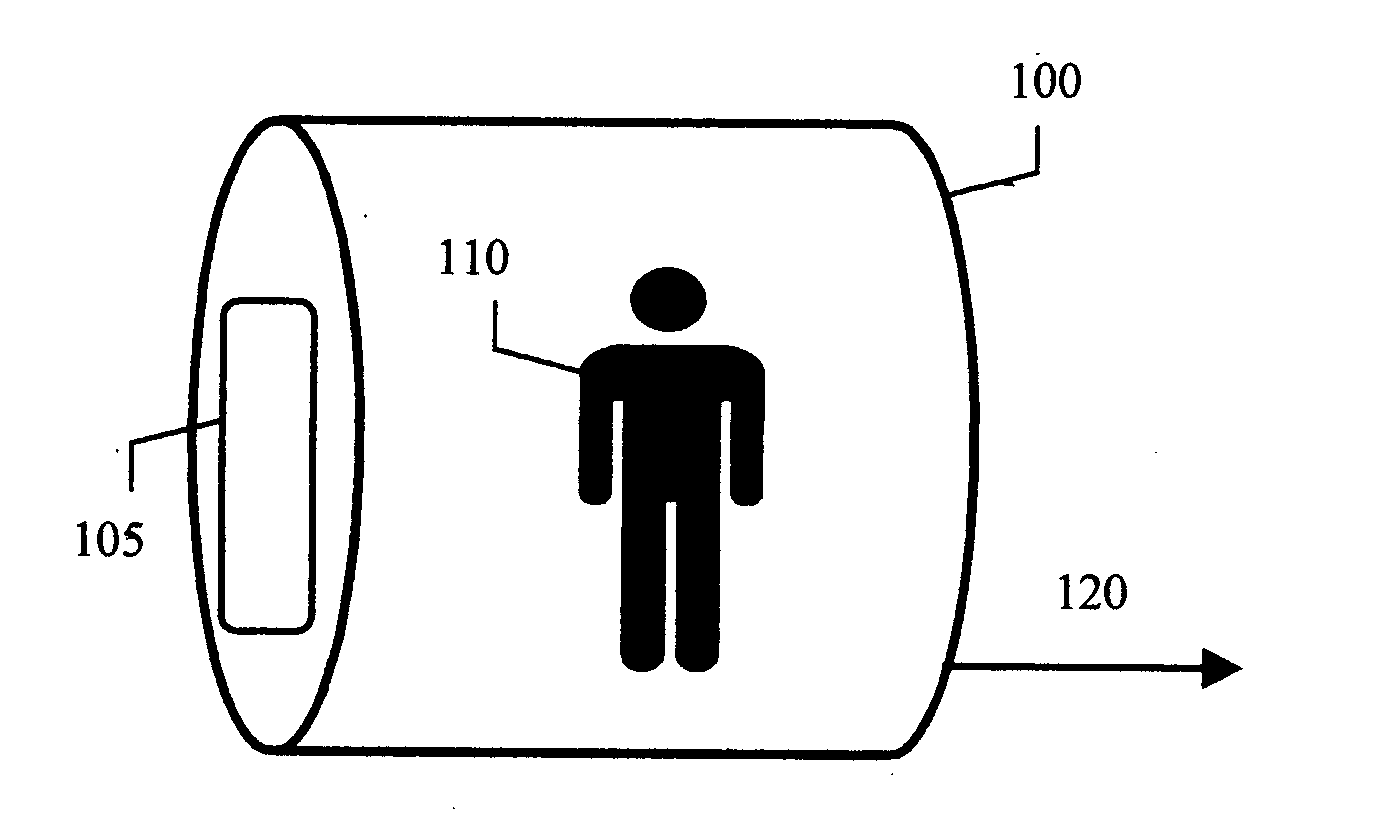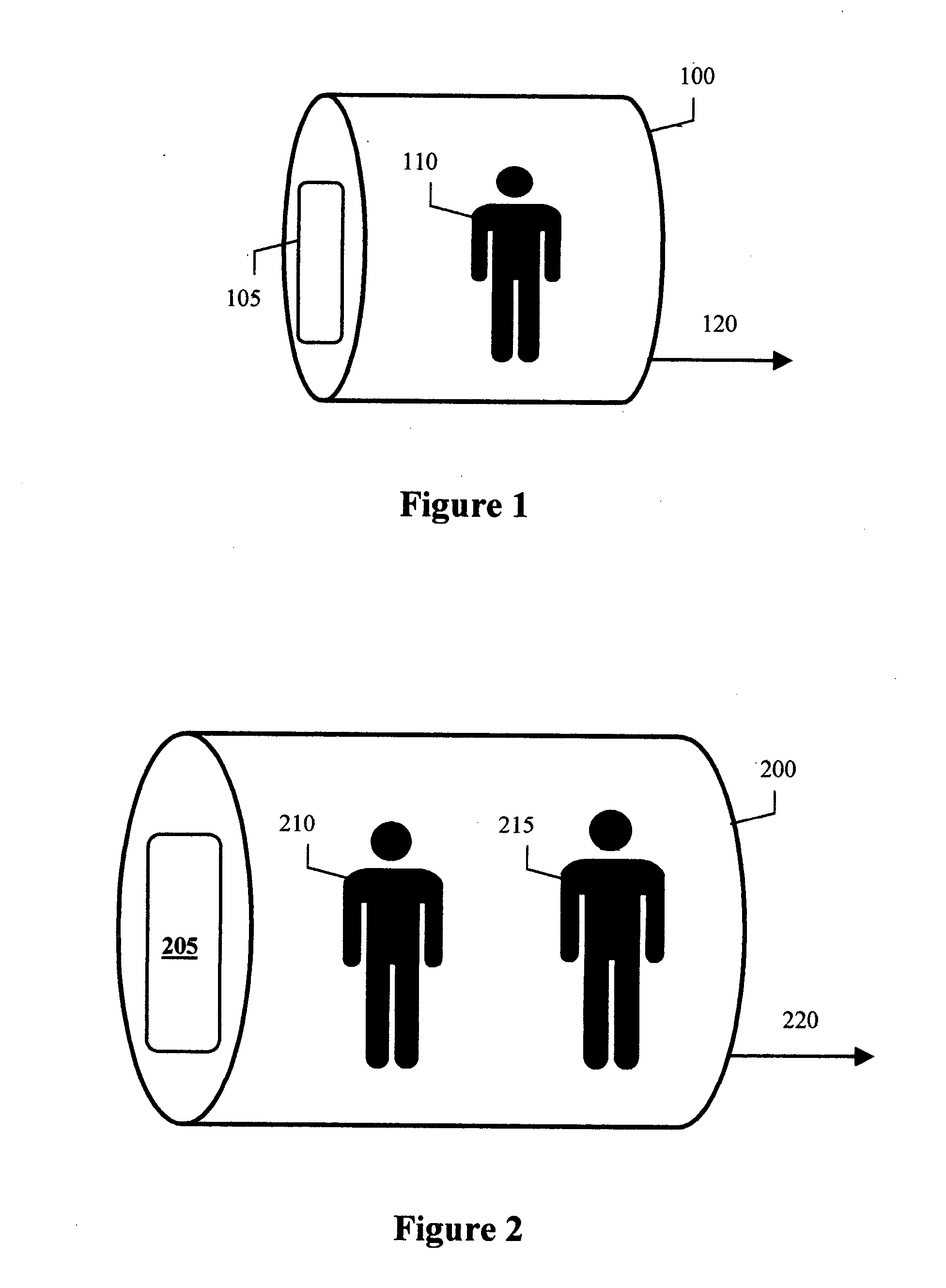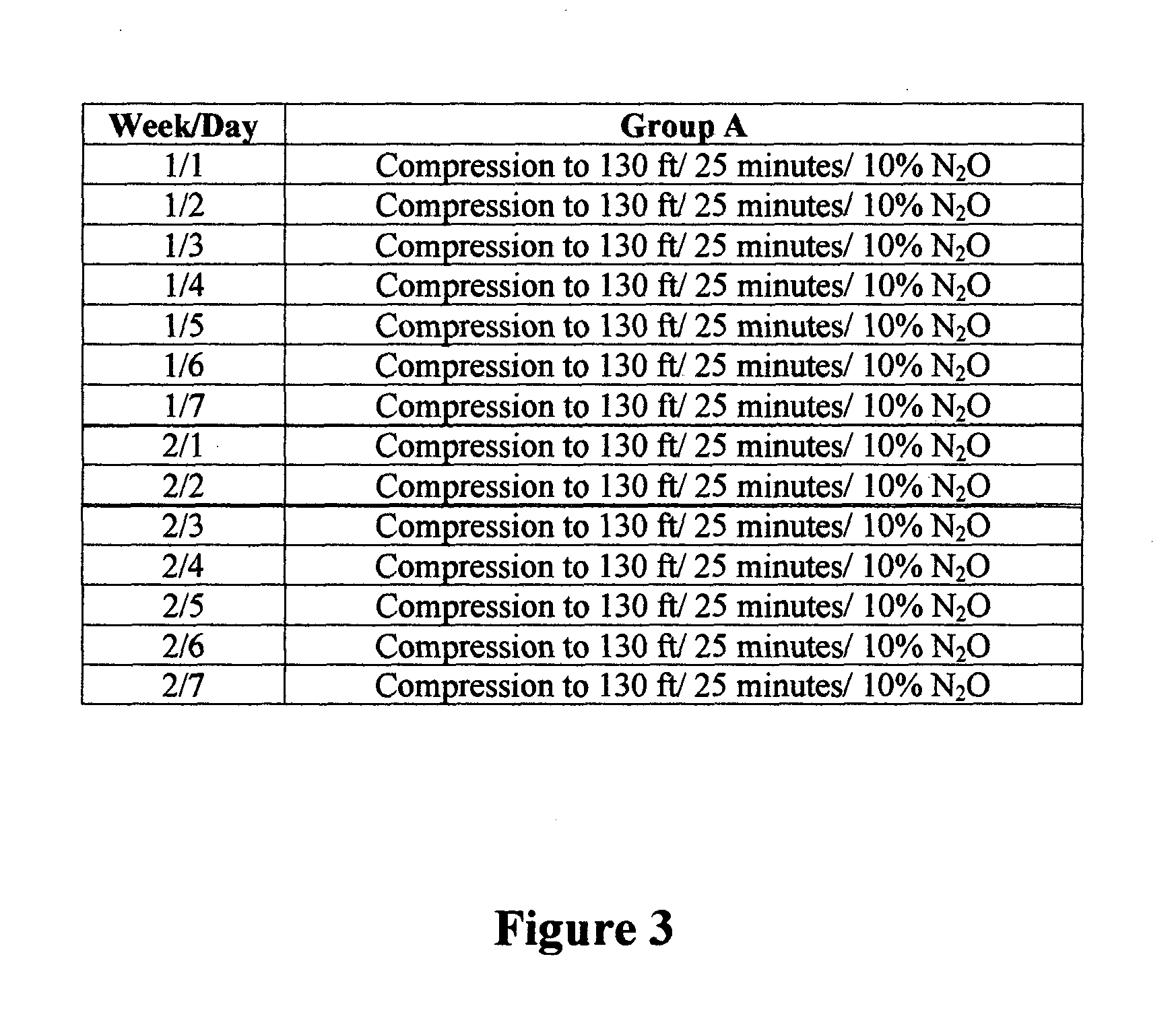Methods for the treatment of HIV and other viruses
- Summary
- Abstract
- Description
- Claims
- Application Information
AI Technical Summary
Benefits of technology
Problems solved by technology
Method used
Image
Examples
Embodiment Construction
[0039] It has been proposed as a result of anecdotal reports of HIV infected divers and recent animal studies that repeated exposure to compressed air may prevent suppression of the CD4 / CD8 lymphocyte ratio and thereby be effective in the treatment of AIDS. AIDS represents the loss of a T cell lymphostasis wherein the decline in CD4 effector cells leads to an immunodeficient state due to an imbalance in CD4 / CD8 lymphocyte availability. The present method makes it possible to stimulate CD4 cell recovery and normalize CD4 / CD8 ratios, reversing the HIV induced suppressor cell dominance thereby providing clinical remission. It is therefore within the scope of this patent application that repeated exposure of AlDS patients to compressed air or nitrogen / oxygen mixtures at pressures up to 7 atmospheres absolute (200 feet of seawater equivalent) will treat and prevent the progression of Acquired Immune Deficiency Syndrome (AIDS).
[0040]FIG. 1 represents a patient 110 receiving treatment for...
PUM
 Login to View More
Login to View More Abstract
Description
Claims
Application Information
 Login to View More
Login to View More - R&D
- Intellectual Property
- Life Sciences
- Materials
- Tech Scout
- Unparalleled Data Quality
- Higher Quality Content
- 60% Fewer Hallucinations
Browse by: Latest US Patents, China's latest patents, Technical Efficacy Thesaurus, Application Domain, Technology Topic, Popular Technical Reports.
© 2025 PatSnap. All rights reserved.Legal|Privacy policy|Modern Slavery Act Transparency Statement|Sitemap|About US| Contact US: help@patsnap.com



